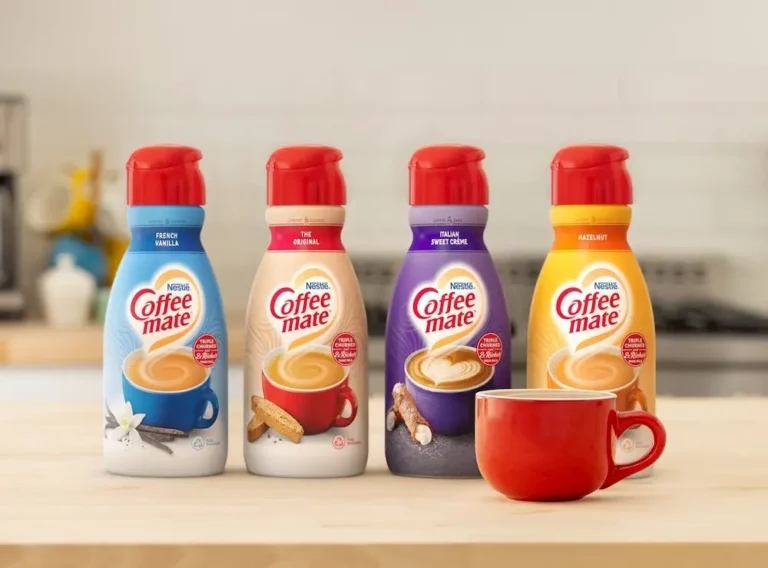Can You Freeze Salsa?
Salsa is a beloved condiment that adds flavor and excitement to many dishes. With its fresh ingredients like tomatoes, onions, peppers, and cilantro, salsa often has a short shelf life. So can you extend its life by freezing?
Freezing is an effective way to preserve many foods while maintaining flavor and texture. For salsa lovers wondering if their favorite dip can be frozen, the answer is yes! Follow proper freezing methods, and most salsas will retain quality when thawed.
What is Salsa?
Salsa refers to any number of sauces or dips in Mexican cuisine. The word “salsa” means sauce in Spanish. Authentic salsas contain raw ingredients like tomatoes, chilies, onions, cilantro, and lime juice.
Salsa comes in many forms from thick, chunky pico de gallo to smooth blended salsas. It can be served warm or cooked as a component of various dishes. But often salsa is made fresh and served cold as a dip, topping, or side.
Why Should You Freeze Salsa?

Fresh salsas have a relatively short shelf life compared to their cooked counterparts. The raw produce ingredients are more prone to microbial growth when left at room temperature or warmer.
Bacteria and fungi can rapidly colonize fresh salsa. Their metabolic activities lead to spoilage and sometimes release toxic compounds that are harmful if ingested.
Aside from microbes, fresh salsa quality also declines due to oxidation and chemical reactions accelerated by heat exposure. So proper storage is required to maximize shelf life.
Salsa should be refrigerated immediately after preparation. But freezing offers an alternative method to stop microbial growth and preserve salsa longer term.
Short Shelf Life at Room Temperature
Fresh salsa has a relatively short time frame before spoiling if left at room temperature. The USDA recommends salsa be refrigerated within 2 hours after preparation.
Given salsa’s raw ingredients and moisture content, leaving it out too long significantly increases the risk of foodborne illnesses. So quick refrigeration or freezing is key.
Is Salsa Affected by Freezing?
Freezing is an excellent way to preserve most types of salsa. The cold temperature stops microbial growth and slows chemical reactions. Properly frozen salsa maintains quality and can be thawed for later use.
Homemade salsa and jarred salsa generally handle freezing very well. As long as you follow proper storage procedures, freezing should not significantly degrade texture or taste.
Textural Changes in Chunky Salsa
However, the chunkier styles of salsa don’t fare as well. Foods with high water content like fresh tomatoes are more prone to textural changes.
When water freezes, it forms ice crystals that can rupture plant cell walls. This causes ingredients like tomatoes and peppers to become mushier once thawed.
Pico de gallo is especially vulnerable since it has larger vegetable chunks compared to smoother salsa. So for maximum texture and crunch, pico de gallo is better preserved through refrigeration.
How Long Does Salsa Last Refrigerated?

Since chunkier salsas are impacted by freezing, refrigerator storage may be the best option to maintain quality. But how long does salsa last in the fridge?
Shelf Life of Jarred Salsa
Commercially jarred salsa products are shelf-stable. Before opening, they can be stored in the pantry or fridge and should last up to 2 months past the printed expiration date.
Once opened, it’s best to refrigerate jarred salsa. Transfer it to a non-reactive storage container, and it will keep for 4 to 6 weeks in the refrigerator.
Shelf Life of Homemade Salsa
Homemade salsa has a shorter fridge life than commercial products. It lasts just 5 to 7 days refrigerated.
For peak freshness, transfer homemade salsa to an airtight, non-metallic container like glass or plastic. Avoid storing it in the original metal mixing bowl.
Then keep the container towards the back of the refrigerator, where temperatures are coldest. This preserves salsa quality as long as possible.
How Long Does Salsa Last Frozen?
Freezing salsa stops microbial growth and preserves quality much longer than refrigerator storage. But what is salsa’s freezer shelf life?
Frozen Storage Time
Properly stored frozen salsa keeps well for up to 2 months.
This shelf life applies to both homemade recipes and salsas purchased commercially. Thawed frozen salsa will retain its flavor and texture during this timeline.
However, always rely on your senses – if thawed salsa smells, looks, or tastes off, err on the side of caution and discard it.
Avoid Freezer Burn
To get the full freezer shelf life without freezer burn, it’s important to use an airtight container. Freezer burn causes oxidation and moisture loss.
Choose a container that salsa won’t react with. Metallic containers can leach flavor while plastic may absorb smells and colors.
What Do You Need to Freeze Salsa?

Freezing salsa requires minimal equipment – just salsa, a freezer, and an appropriate storage container.
Picking a Salsa Container
As mentioned, the container material matters. To avoid reactions:
- Avoid metallic containers that may impart off-flavors
- Avoid plastic containers that can absorb salsa’s bright colors and strong smells
Glass jars are ideal for freezing salsa. Wide-mouth mason jars allow easy scooping, and glass won’t affect salsa’s quality.
Freezer Requirements
Your freezer also needs to be cold enough. Food will freeze best at 32°F or below. This quick freezing prevents large ice crystals from forming.
Check your owner’s manual for your freezer’s temperature range. Be sure to adjust the setting as needed before freezing salsa.
How to Freeze Salsa
With the right freezer and container, the process is easy. Follow these steps for freezing salsa:
1. Allow salsa to cool
Salsa should be cooled to room temperature before freezing. Putting hot or warm salsa directly into the freezer leads to larger ice crystals. These cause more cell damage and textural changes.
2. Choose a container
Pick an airtight freezer-safe container. Leave a little headspace to allow for expansion during freezing. Wide-mouth glass jars work perfectly.
3. Freeze promptly
Place the salsa container on a stable shelf in the back of the freezer, away from vents. Avoid the door shelves which warm during opening and closing.
Quick freezing maintains quality. Most freezers will solidly freeze salsa within 24 hours.
How to Defrost Salsa
Thawing and serving frozen salsa is also easy. There are a few defrosting options to consider.
Stovetop or Fridge Thawing
Thaw salsa gradually using low heat on the stovetop or overnight in the refrigerator. This prevents any additional textural damage.
For stove thawing, put the frozen salsa container into a pan of warm water. Use the lowest heat setting and stir periodically.
Skip Heating Completely
Some salsas and recipes don’t require cooking or heating. In these cases, defrost salsa completely in the fridge before serving.
For example, thawed salsa works great as a dip, salad dressing, or taco topping without additional heat.
Quick Thaw Method
For faster thawing, place the frozen salsa container in a bowl of room temperature water. Change the water every 20 minutes until completely thawed.
This quick thaw method works best for salsas being immediately heated and served. Avoid letting the salsa sit thawed for extended periods.
The Verdict on Freezing Salsa
So can you freeze salsa? The answer is yes – for most styles, freezing preserves salsa safety and quality for 2+ months. Be sure to cool salsa before freezing and use an airtight freezer-safe container.
Thaw frozen salsa gradually on the counter, stovetop, or in the fridge. And enjoy your homemade or store-bought salsa even longer!







